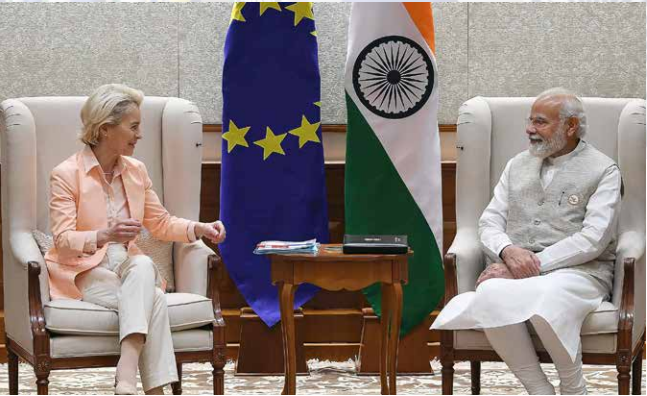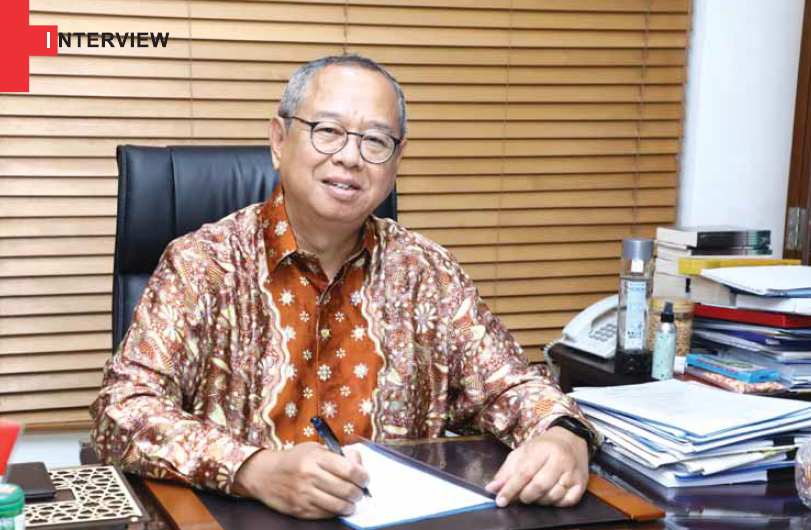India and Chile maintain strong and friendly relations, sharing similar views on a variety of global issues. Chile aligns with India’s concerns regarding the threat of international terrorism and has consistently condemned the terrorism acts that India has faced. The two countries work closely together in multilateral forums and hold similar positions on climate change, renewable energy, and the expansion and reform of the United Nations Security Council (UNSC). Following Chile’s Foreign Minister’s official visit to India in April 2003, Chile expressed its support for India’s bid for a permanent seat on the UNSC, a position it has reiterated over the years.
India and Chile have signed various Agreements and Memoranda of Understanding (MoUs) to enhance cooperation in fields such as sports, science and technology, Antarctica, defense, air services, agriculture, new and renewable energy, education, outer space, geology and mineral resources, and the gainful employment of spouses and eligible dependents of diplomatic personnel. On September 6, 2016, an agreement was signed to expand the India-Chile Preferential Trade Agreement (PTA), increasing its coverage from approximately 474 tariff lines to 2,829 tariff lines. Further expansion of the PTA is currently under discussion. In April 2019, In April 2019, on the occasion of the official visit of the President of India, Ram Nath Kovind, agreements for cultural exchange and cooperation in the mining sector were renewed, along with a new agreement focused on cooperation in the disability sector. The Double Taxation Avoidance Agreement between India and Chile was signed on March 9, 2020, and came into effect on October 19, 2022, following ratification by both countries.
The dialogue between our countries has intensified, particularly evident in recent high-level meetings. During the recent encounter between Prime Minister Narendra Modi and Presidente Boric, at the G-20 Summit, both dignitaries underscored our shared ambition to deepen bilateral ties, especially in trade, investment, and cultural exchanges. We acknowledged the necessity to expand our Preferential Trade Agreement, which continues to offer significant potential given our robust trade, currently valued at $2.7 billion.
Is in this positive atmosphere that President Boric’s official visit to India, and this dynamic city, will take place next year. We are working to make this happen. President Boric stated that he and the Indian Head of State discussed the ongoing negotiations for a trade agreement between their two countries (CEPA) and explored new opportunities for investment and promoting public-private trade. Another significant aspect of their conversation focused on enhancing academic exchange and cultural collaboration. President Boric remarked, “India is one of the largest economies in the world, with immense demographic potential for the future. We are working to strengthen our ties, which we plan to deepen during our next official visit to India next year.” In response, Mr. Modi also shared on X that the two countries are reinforcing their relations across various sectors. He noted, “Our conversation highlighted how to deepen cooperation in the pharmaceutical, technology, and space sectors, among others. It is encouraging to see Ayurveda gaining popularity in Chile, which presents another area where our ties can flourish.” These statements provide a clear picture of the current and future state of Chile-India relations.

Additionally, two months ago, Chile’s Minister of Foreign Affairs, Alberto van Klaveren, visited India, marking his first visit to Mumbai. This visit occurred in the context of the Joint Commission Meeting (JCM) held in New Delhi on August 25-26, 2024. During this meeting, Chile reaffirmed its full support for India’s bid for a permanent seat in a reformed United Nations Security Council. Both governments expressed concern over the insufficient climate finance currently available for mitigation and adaptation, which fails to address the worsening impacts of climate change in developing countries. They emphasised the need for developed nations to mobilise additional climate finance to meet the targets outlined in the Paris Agreement. Moreover, in light of the vulnerability of their populations to the impacts of climate change, both countries, as members of the Coalition for Disaster Resilient Infrastructure (CDRI)—established in 2019 under the leadership of the Government of India—agreed to collaborate closely on building resilience against climate change. Disaster management emerged as a potential area for bilateral cooperation and exchange of experiences to effectively address the consequences of natural disasters such as tsunamis, earthquakes, floods, and other events.

At the trade level, there is a consensus that the current trade volume of $2.7 billion, while significant, is considerably below potential. One effective way to enhance our trade is by promoting mutual business partnerships, investments, and tourism. Both countries must explore mutually beneficial collaborations in the minerals sector, particularly in copper and lithium. Chile is already a key supplier of copper, but India seeks to secure long-term supplies with higher quantities due to the increasing demand for metals, such as copper, and minerals like lithium in the electric vehicle (EV) industry.

Chile’s vast reserves of essential minerals, especially lithium and copper, are of great interest to India. These minerals are crucial for India’s growing emphasis on electromobility and the manufacturing of electric vehicles. It is important to mention Chile’s national strategy for lithium, adopted last year, which invites Indian companies to participate in tenders for new lithium deposits. Collaboration in the lithium sector is expected to play a vital role in supporting India’s green energy initiatives. Agriculture remains another key area of cooperation between India and Chile, with a pressing need to expand the trade of agricultural products. Known for its abundant agricultural exports, Chile views India as a promising market for its products, particularly nuts, wines, and fruits. The two countries are working to address sanitary and phytosanitary (SPS) concerns to facilitate smoother trade. Chile has also expressed interest in importing Indian bananas, basmati rice, and mangoes. Additionally, India is exploring opportunities to export products such as roses, garlic, and kidney beans to Chile, aiming to diversify and enhance bilateral agricultural trade. To this end, both countries are diligently working to expedite the establishment of the Joint Working Group under the Memorandum of Understanding (MOU) for the Expansion of Cooperation in the Agriculture Sector, which was signed on May 16, 2023.
An important aspect of the bilateral trade between India and Chile is the potential for India to expand its presence in Chile’s pharmaceutical market. India is a leading global exporter of pharmaceutical products, and there is a growing demand for Indian medicines in Chile. There are significant opportunities for joint ventures between Indian and Chilean companies in this sector, which could further strengthen India’s foothold in the Chilean market. Such collaborations may also lead to the development of innovative healthcare solutions tailored to the needs of both countries. In this context, it is noteworthy that India seeks official recognition of Ayurveda, the ancient Indian system of health and well-being, in Chile.
Other vital areas for cooperation and investment include infrastructure, where Indian railway companies can provide ready-made rolling stock for Chilean railways and participate in developing railway projects in the country. In the defense sector, India’s industrial capabilities offer a wide range of solutions across various domains, including personal protective equipment, platform protection, electro-optics, high-end electronics and communication systems, arms and ammunition, artillery systems, armored vehicles, aircraft, aerial systems, naval ships and platforms, UAVs, and anti-drone technology.

In education, science, space, and Antarctica, both countries are engaging in negotiations to finalise Memoranda of Understanding (MOUs) aimed at encouraging student mobility, promoting excellence in higher education, protecting the Antarctic environment—which is crucial for addressing climate change—and ensuring that the continent remains clear and safe. Additionally, both nations seek to collaborate in the peaceful use of outer space.

Chile remains a significant trade partner for India in Latin America, with bilateral trade reaching $2.7 billion in 2023-24. Beyond copper and lithium, Chile is also a key supplier of other critical exports to India. As both countries strive to enhance their economic ties, the potential Comprehensive Economic Partnership Agreement (CEPA) is expected to further strengthen their trade relationship.

In conclusion, India and Chile are at a watershed point in their bilateral relationship, distinguished by shared values, mutual respect, and a shared commitment to addressing global concerns. Their developing connection spans trade, climate resilience, education, renewable energy, and cultural exchange, demonstrating the breadth of their collaboration. With the promise of increased economic engagement through a Comprehensive Economic Partnership Agreement (CEPA), collaboration in critical sectors such as pharmaceuticals, agriculture, and critical minerals, and a shared vision for a sustainable and resilient future, the two countries are poised to strengthen their strategic ties. This alliance not only has the potential for mutual benefits, but it also reflects their shared commitment to promoting global peace, security, and development. As they prepare for high-level visits and additional discussions, the India-Chile alliance serves as a striking example of cooperation and the great potential of synergistic collaborations in our linked world.






